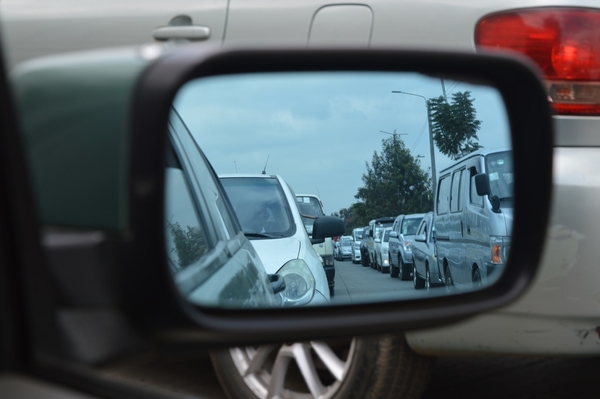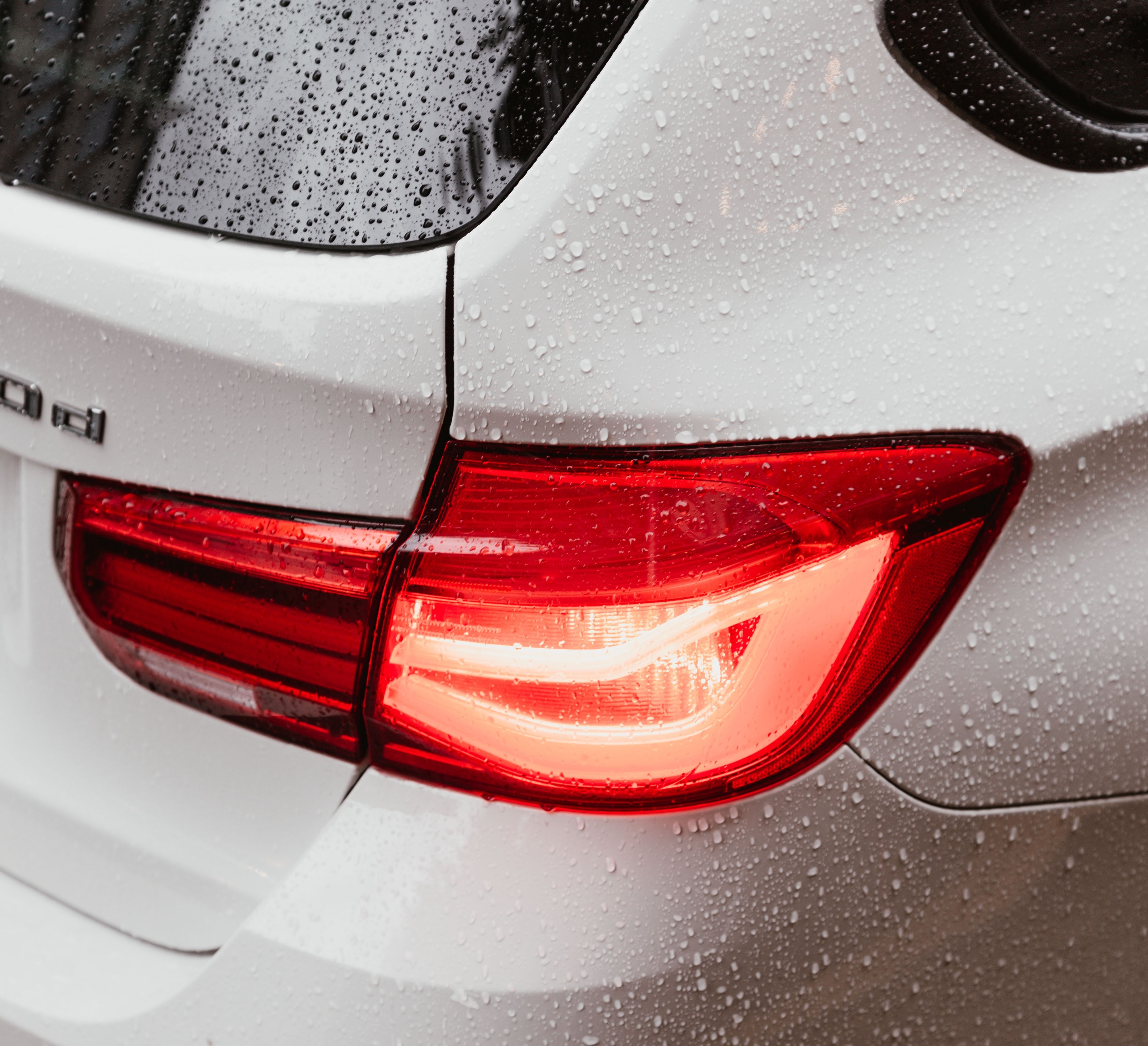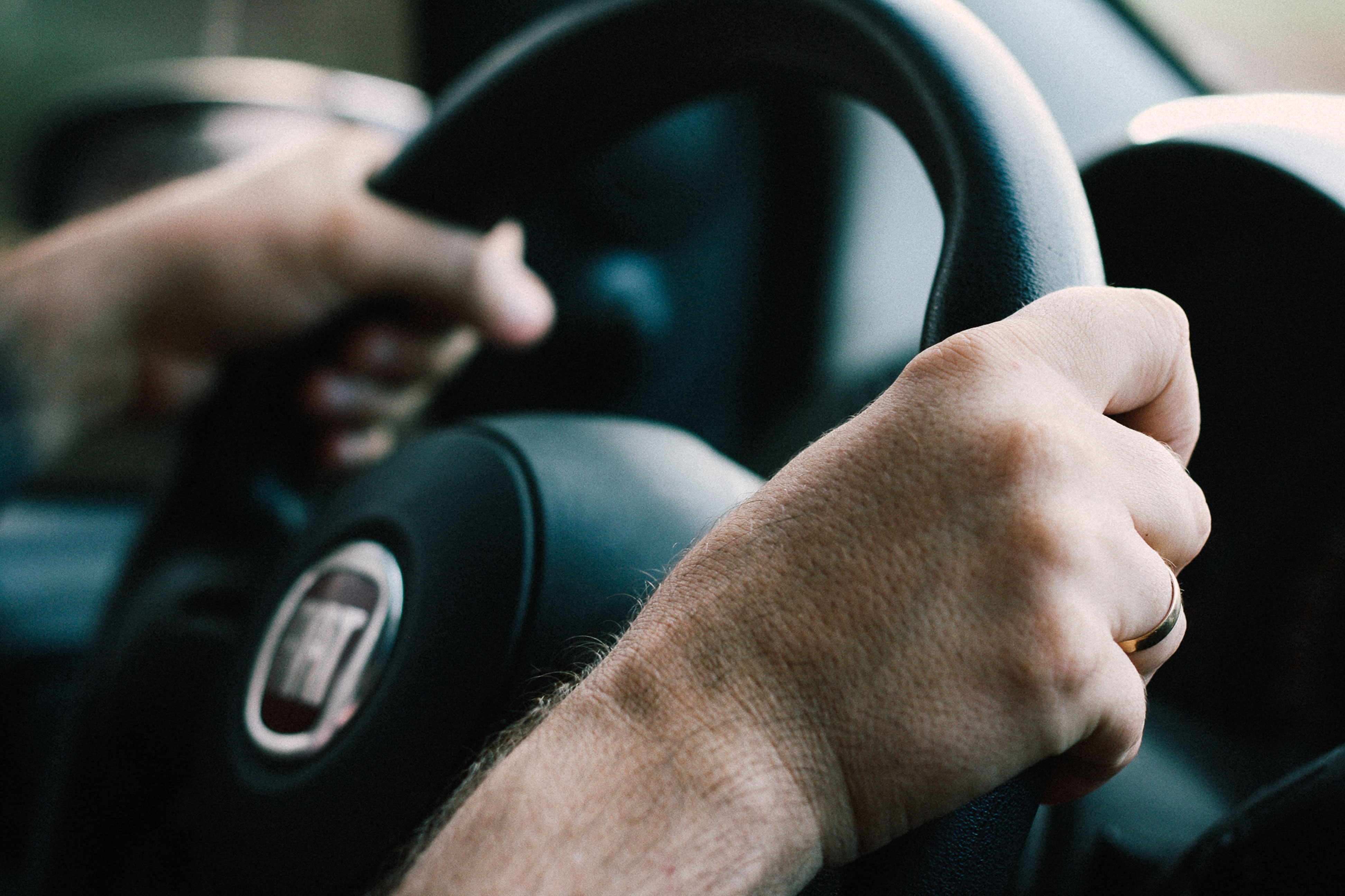When you’re taught how to drive, you’re taught the most important rules such as following road signs — but there’s a good chance that there are other more subtle rules are left out from your knowledge.
These rules aren’t just a caution to help you avoid the law, but are also in place to help you become a safer driver.
Currently browsing: Uncategorized
5 Victorian Road Rules You Didn’t Know
3 Most Important Tips To Pass The Driving Test

While there are many tips that people might give you to pass the driving test, we’ve narrowed it down to just the 3 most important tips – the ones we believe you should focus on most. Of course this is assuming that you’ve already practiced driving significantly and are on track to become a safe driver.
How To Renew Your Driver’s Licence
Renewing your licence might not seem like an important task, but it’s useful to understand how to do – especially because you’re probably going to be driving all the way into old age and you’re going to need to renew your licence at some point. As well as this, if you ever drive unlicensed, you can be heavily punished.
Driving unlicensed
If you haven’t been manually staring at the expiry date of your driver’s licence being paranoid that it’s going to expire soon like most people, you’re going to receive a renewal notice six weeks before it expires. That is, you haven’t renewed your licence yet. Though if you didn’t receive any notice, it’s still your responsibility to make sure that you’re not driving with an expired licence.
If you do need to renew your licence, there are special conditions if you’re not on an unrestricted licence yet.
Learner licences
While other P1, P2 and unrestricted licence holders are permitted to renew their licence online, learner licence holders must attend a service centre or registry in person. Furthermore, learner licence holders must pass the knowledge test (the same test they passed to get their licence in the first place) to renew their licence.
Furthermore, drivers must pay the learner licence fee again. Despite this, it’s rare for someone to renew their learner licence as learner licences are valid for five years. This means that most people either progress to become P1 drivers or if they have chosen not to drive, simply use a photo card as a form of identification.
P1 and P2 licences
The amazing thing about a P1 and P2 licence is that there’s no time limit for moving through to the next stage of your licence and you’re able to renew your P1 and P2 licences as many times as you want.
P1 licences last 18 months before expiry and P2 licences last double that – 36 months. Furthermore, every renewal requires a fee.
P1 and P2 licence holders are able to renew their licences online.
Renewing online or in person
If you want to renew your licence online click here.
If you want to renew your licence in person, you can visit any service centre or registry and follow the steps given to you there. Typically this will involve filling out a form, providing your current licence and paying the required licence fee.
When you can renew
Remember that you’re able renew your licence up to 6 months before it expires. This means that there’s a half a year gap between being able to renew your licence and having your licence expire – plenty of time to make sure that you don’t drive around with an expired licence.
If you renew your licence within 6 months after the expiry date, your new licence’s expiry date will be calculated based on your previous licence. However, if you renew it more than 6 months after the expiry date, your licence will be reissued.
Cancelled licences
If your licence has been cancelled, suspended or disqualified – depending on the severity of the cause there are special steps you must take in order to renew your licence. To find out further information, call or visit a service centre and explain your situation.
Check out our other blogs
Speed Limits In Australia
What You Must Check For Before Your Driving Test
What Do I Do After A Crash?
How To Get A Free Driving Lesson
Important Update: Keys2Drive Program Ceased
LTrent previously offered a FREE driving lesson for learner drivers and their parents/supervisors under the Keys2Drive program. However, please note that the Keys2Drive program has been discontinued as of 30 June 2023.
So you’ve got your learner’s licence but you or your parents/supervisors are not sure of the best approach in learning how to drive. Luckily for you, LTrent has driving instructors affiliated with a special program called Keys2drive – an innovative approach to learn road safety through a free driving lesson.
This is an Australian Government-funded program designed to help learner drivers (only learners are allowed to go through this course) and their parents/supervisors with an accredited driving instructor, aimed to provide new drivers with the capacity to teach themselves and others the skills required to drive.
Why a free lesson is offered
There’s an overwhelming statistic where new P1 driver’s are twenty to thirty times more likely to be harmed in a crash than an unrestricted driver. This is simply due to the new environment of driving alone as well as the untested confidence of finally getting a licence. In order to limit this statistic, a free lesson that encompasses techniques for self-improvement in driving is encouraged for learner drivers.
In order to attend the lessons, the learner driver must hold an Australian learners permit and a supervising driver must hold an unrestricted licence and attend the lesson. The reason the parent or supervisor should be at the lesson is so that it provides them with the skills and capacity to help understand how they can help the learner learn. Feedback from Keys2Drive has informed us that communication has improved between parents and their learners due to the capacity of the supervisors understanding how best to teach someone a new skill.
A special learning experience
Keys2Drive offers a special 60 minute session that takes an entirely different approach to traditional driving lessons in the sense that the lesson attempts to teach the student to teach him or herself. This includes providing them with the resources and confidence to self-assess, self-instruct and self-supervise.
This makes up the first part of the lesson including examples of how these introspective techniques can be applied while driving. The remaining time is used on practically using these skills while driving and adding these mental models to your driving.
While the Keys2Drive lesson isn’t exactly like a traditional driving lesson, it certainly doesn’t replace it. It’s created to complement driving lessons as Keys2Drive teaches you psychological techniques for learning, and driving lessons teach you the driving techniques themselves. With both these tools equipped, you’ll learn more rapidly and broadly.
When you should take your free lesson
In fact, Keys2Drive recommends that you take the free lesson after you’ve done around 5-10 hours as you’ll have a basic understanding of how to drive and you’ll be reaching a point where further improvements in your driving can be learnt quickly. Similar to how if you’ve learnt your first few songs on a new instrument, you’re able to learn new songs even faster.
Despite this, Keys2Drive is extremely valuable for all learner drivers – even if you’re ready to take your driving test to become a P1 driver as you’re able to take the P Plate ready assessment which involves a scoring sheet checking whether or not you’re ready for your test.
Check out our other blogs
What You Must Check For Before Your Driving Test
What Do I Do After A Crash?
Top 5 Reasons To Fail The Driving Test
What You Must Check For Before Your Driving Test
Despite being completely prepared to pass the driving test itself, your test can still be terminated because of external conditions — most of which you can control. These include making sure all your paperwork is ready and most importantly, that your vehicle is safe to drive and that your body is in a healthy state.
Prepare your vehicle for the driving test
Your test can be immediately terminated if your testing vehicle is deemed unsuitable for safe use. There are a few checks that you can do before your driving test to ensure that your vehicle is ready.
- Indicator and brake lights — make sure that these lights operate properly, aren’t dirty or discoloured.
- Tyres — if your tyres are unsuitable for driving then your vehicle will be deemed unsafe so make sure that all your tyres are safe by checking the wear, damage and pressure.
- Registration — ensure that your vehicle is registered.
- Windscreen — if your windscreen is cracked or broken in a way that will obstruct your or your testing officer’s vision, then it must be fixed before your driving test (doesn’t apply to minor cracks).
- Seat belts — ensure that seat belts are able to fit both you and the testing officer.
- Mirrors — if your mirrors are broken or damaged in a way that obstructs vision, they must be fixed before you take the exam.
Furthermore, if your vehicle is unsuitable for the class of the driving test — for example, you’re driving a car with an engine only full licence drivers are allowed to use, then your test can be automatically terminated.
For more information, look at Section 5 of the Guide to the Driving Test
Prepare yourself for the driving test
One thing you have to remember before you go to the test is that you bring your Learner Driver Log Book and that it has been completed. This is crucial to the exam and if it has not been completed, you aren’t permitted to take the driving test.
Make sure that you take the test without any drugs and alcohol, not just due to its legality but also because it makes you an unsafe driver. If you’re suspected to be on any substances during the test, you can have your test terminated.
Note that it’s possible that your driving test can be terminated at no fault of your own. For example, if weather conditions are extremely poor that cause the driving test to be too demanding, you may be forced to reschedule your test. While this is unfortunate, it’s in place for your safety.
Above all else, remember to go to your driving test early so you don’t miss it. You can’t take the driving test if you aren’t there yourself. Remember to bring yourself to a healthy state so you have the best chances of passing the driving test
If you need any help with handling the logistics of the driving test, contact LTrent here
Check out our other blogs
What Do I Do After A Crash?
Top 5 Reasons To Fail The Driving Test
What If I Fail My Driving Test?
Top 5 Reasons To Fail The Driving Test
It’s time for you to take your driving test and you’re afraid of failing — which is a reasonable fear. It’s a good idea to understand the ways that most people fail. Here are the most common ways that people fail the driving test.
Failing to check intersections properly
An extremely common way to fail the driving test is to check intersections poorly. The reason why checking intersections properly is so important is because you’re more likely to get into an accident at an intersection than driving on a straight road.
This is because it requires a reset in your mind where you have to stop, make sure to check properly that there aren’t cars that can potentially crash into you and then move as opposed to driving straight the entire time.
A common way to fail is by not turning your head to take a look when you approach an intersection. Note that this is extremely important even if there are cars that are meant to be stopped at a red light — as you never know if people will accidentally break the rules and crash into you.
Performing manoeuvres unsafely
The most common manoeuvres to fail are three-point turns and reverse parks. A common way to fail is due to a strong focus on getting the manoeuvre correct and forgetting to do traffic checks to ensure that it’s actually safe to start the manoeuvre in the first place.
Another way people fail is by not positioning properly or not doing the manoeuvre properly and not realising it until after the instructor has checked. Finally, it’s common to fail the kerb side parking by not parking close enough to the kerb.
Manoeuvres come with practice and we recommend that you dedicate certain driving sessions purely to practice manoeuvres. Training your muscle memory to intuitively understand how to perform them is crucial.
Not turning at an intersection at the right moment
A common way for people to fail is to go too early or too late at an intersection. The more common one is for people to get nervous at an intersection and impulsively cross the intersection unsafely.
It’s important to make sure that during your driving practice, you understand when there is a satisfactory gap to drive and that if you have a satisfactory gap, you take it.
Failing to observe regulatory signs
A sure way to fail is by not following regulatory signs. This includes not stopping at stop signs. Many people fail by slowing down at stop signs as if they are give way signs instead of stopping completely — an instant fail.
Furthermore, crossing unbroken lines by accident is common. It’s important to understand that you cannot cross white unbroken lines and to revise on regulatory signs before taking the test.
Speed
Many drivers fail the driving test by failing to drive at the appropriate speed — whether it’s too fast or too slow. Especially on longer stretches on main roads, it’s common to lose focus and drive at the same speed that other cars are driving.
However, if other cars are speeding, that doesn’t mean that you’re permitted to speed as well — which will lead to a fail in your driving test.
If you have any enquiries on how to pass the driving test, contact LTrent here.
Check out our other blogs
What If I Fail My Driving Test?
How To Change Lanes
Will I Have To Reverse Park During My Driving Test?
Speed Limits In Australia
Will I Have To Reverse Park During My Driving Test?
So you’re preparing for your driving test and you have everything prepared for it — except for the reverse park. Somehow you’re unconfident and you’re wondering if it’s going to be assessed, hoping that it won’t.
There’s good news and bad news for you. The good news is that it might not get tested. The bad news is that it might be tested.
We can’t tell you what exactly is going to be in your driving test, but your manoeuvres will definitely be tested.
More specifically, you will be asked to do a number of the following manoeuvres.
- A kerb side stop.
- A hill start.
- A three-point turn.
- Parking: Reverse Parallel, 90 or 45 Degree, Front or Rear to Kerb.
You can be asked to any number of these manoeuvres — although the typical amount is two.
As you can see, reverse parallel parking is certainly one of the manoeuvres that can be tested.
The Rules Behind Reverse Parking
Most learner drivers typically worry the most about reverse parking — and rightfully so. It isn’t the easiest manoeuvre to perform. But just like any other skill and any other manoeuvre, with the right amount and method of practice, you’ll be able to ace the reverse park.
If you need help with doing reverse parking, the Trent Method covers the four step reverse parking procedure.
In order to reverse park adequately for the driving test, there are a few rules you’re going to have to follow.
- Your vehicle must be parallel and closer than 500mm to the kerb with the wheels not touching the kerb. This is a rule for all parking manoeuvres and should be practiced alongside the kerb side stop.
- You must also stay one metre away from other vehicles but no more than two metres from other vehicles when you park.
- You must perform the reverse park with a maximum of four direction changes — standard for all parking manoeuvres.
Just like any other manoeuvre, while you’re performing the reverse park you must execute observation checks. Most notably you must turn your head and check your blind spot before you steer during reversing, as the front of your vehicle can swing into the lane.
While reversing you must also observe the direction of travel including checking the mirrors and through the rear and side windows.
This is to ensure that you won’t bump into any other objects while you’re reverse parking.
As you can see, a deep understanding of these rules is required in order to reverse park for the test.
You Can Improve at Reverse Parking
Despite the intimidating rules around reverse parking, it’s not an overwhelmingly difficult manoeuvre that it appears to be. Just like driving, with practice you will slowly get better and better until you’re confident in reverse parking.
If you struggle with reverse parking and need help, LTrent provides dedicated lessons in learning any manoeuvre and we highly encourage you to practice all your manoeuvres until they become muscle memory.
Book my test preparation lesson now!
We can also take you to your driving test including a warm-up lesson.
If you have any questions, please feel free to contact us on 02 8748 4500.
Speed Limits In Australia
Speeding is one of the most dangerous driving offences contributing towards 40% of road fatalities per year. But the definition of speeding might not be clear at first. Speeding simply means exceeding the speed limit.
The biggest misconception of a speed limit is that they’re recommended speeds for driving when in fact they are the maximum legal and safe speed to drive at.
The following is a table of the different speed limits of every state:
| State/Territory | School Zone | Built-Up Area | Rural Area | Highest Speed Zone |
| Australian Capital Territory | 40 | 50 | 100 | 100 |
| New South Wales | 40 | 50 | 100 | 110 |
| Northern Territory | 40 | 60 | 110 | 130 |
| Queensland | 40, 60 or 80 | 50 | 100 | 110 |
| South Australia | 25 | 50 | 100 | 110 |
| Tasmania | 40 or 60 | 50 | 100 | 110 |
| Victoria | 40 or 60 | 50 | 100 | 110 |
| Western Australia | 40 or 60 | 50 | 110 | 110 |
Speed limits are different depending on numerous factors including pedestrian activity, traffic controls and hazards.
You might be also questioning that if safety was such a priority, why wouldn’t the speed limits be even lower?
The answer to that is that it would create too much traffic. Hence, the roads are created to find an optimal trade-off between safety and amount of traffic.
Understanding Stopping Distances
Something extremely important to know are the different stopping distances for the different speeds.
| km/h | m/sec | REACTION DISTANCE | BRAKING DISTANCE | STOPPING DISTANCE |
| 40 | 11.1 | 17 m | 8 m | 25 m |
| 50 | 13.9 | 21 m | 13 m | 34 m |
| 60 | 16.7 | 25 m | 18 m | 43 m |
| 70 | 19.4 | 29 m | 25 m | 54 m |
| 80 | 22.2 | 33 m | 32 m | 65 m |
| 90 | 25.0 | 38 m | 40 m | 78 m |
| 100 | 27.8 | 42 m | 49 m | 91 m |
| 110 | 30.6 | 46 m | 60 m | 106 m |
Although through driving you’ll come to understand intuitively when to stop, it might be of interest to you to understand the numbers behind when to stop as there are different stopping distances for different speeds.
As a general rule, you need to keep a minimum of 3 seconds away from vehicles around you.
What The Speed Limits Mean
40 km/h
These zones are typically high traffic areas where chances of collisions are higher due to the large amount of activity such as pedestrians. The most common area with this speed limit will be school zones due to the many children present. Bus stops and areas with road work are two other areas with this speed limit.
It’s wise to be wary of hazards in this area due to the high amount of activity.
50 km/h
50 km/h is the most common speed limit as it’s the default speed limit in built-up areas of every single state in Australia except Northern Territory. It’s the speed limit you have to follow if there are no speed limit signs.
While these areas are characterised with less activity than 40 km/h areas, there’s still a great need to be careful due to frequent encounters with pedestrians.
Many areas with this speed limit are suburban areas with homes.
This is an important speed to know for learner drivers as you’ll likely be taken to areas without speed limit signs and be expected to drive safely at 50 km/h.
80 km/h
This speed zone is also extremely common as it’s found in urban areas on divided roads without driveway access, undivided arterial roads on the fringes of urban areas and lower quality rural roads.
Despite a lower amount of hazards, it’s vital to be careful in these areas as they can be typically populated with many other vehicles also driving at this speed.
100 km/h
This is the default speed limit in all non-built-up areas for all states other than Western Australia — where the default speed limit is 110km /h. This speed limit applies to most rural roads but the most common place you’ll find it are on urban motorways.
Although there are a lower amount of hazards and activity in these areas, it’s still wise to be careful as you’ll likely encounter other cars driving at the same speed and collisions will be more heavily damaging.
The stopping distance at 100km/h is over 90 metres meaning you should leave adequate distance between other vehicles if driving on these roads.
110 km/h
This is the highest speed limit in every state other than Northern Territory and Australian Capital Territory. These zones are only found in high quality rural divided roads and non-urban motorways.
Similarly to 100 km/h zones, there are low amount of hazards and especially a low amount of curves on the road. This means that it’s much clearer what the hazards are if there are any and you’ll likely be able to see most other cars.
Despite this, understanding adequate stopping distances at this speed is essential as higher speeds mean a greater risk of injury in crashes.
Check out our other posts
Why Do I Need 120 Hours To Take A Driving Test?
What Do I Do If I Lose My Logbook?
Should I Record My Logbook Hours With My Parents Or An Instructor?
Why You Should Get Your Learners Licence When You’re 16
If you reside in Melbourne or anywhere else in Victoria then you’re able to get your Learners licence when you’re 16. But you’re only able to take the driving test and receive your P1 licence when you’re 18 with the minimum requirement of holding the Learners licence for a year.
It might seem intuitive to get your Learners licence then when you’re 17 since you only need to be driving for one year to get your P1 licence.
But there are a few reasons to get your Learners licence as soon as possible.
You Have More Time To Drive
The first is that you need 120 driving hours and in Victoria, there are no bonuses for using a driving instructor. With other priorities like doing well in school or simply wanting to spend as much time with your friends as possible, it might be hard to find the time to drive.
Having an extra year to do these hours provide you with a lowered urgency to complete the hours whilst also providing you with more time for your subconscious to digest and understand safe driving habits intuitively.
If you’re a student in high school, you’ve probably experienced the difficult endeavour of last-minute cramming on an exam and found that even if you remembered enough to take the test, it was difficult to understand the course content long term.
This is because repeated instances of an event over a longer period of time become more ingrained in our memory.
It Teaches You How To Take Responsibility
Another reason is that it provides you with independence and a sense of responsibility.
For most of us, up until the point where we drive we haven’t really had any responsibilities that seriously impacted other people. We’ve been taken care of by our parents our entire lives and didn’t have to do things that could potentially be dangerous.
When you start driving, you’re responsible for not just your own life, but everyone in your car and every person in every other car that you can potentially come into contact with.
You not only have to make sure that you follow all the road rules, but you have to make sure that you’re in general a safe driver on the road so that you don’t hurt anyone or your car.
There’s A Lot To Learn From Driving
Another reason is that there’s simply a lot to learn from driving. Like picking up any skill, you’ll struggle when you start (unless you’re a natural!) but you’ll slowly get better over time. You’ll notice that as you learn more, you’ll stop thinking about certain maneuvers and perform them automatically.
And you’ll learn that this applies to any skill. Whether it’s playing the guitar and intuitively playing songs rather than thinking about what chord you need to do next or studying math where times tables were so difficult as a child but now they’re automatic.
Whilst a large part of your high school life is plagued (or blessed) with a rebellion against authorities like your parents and teachers, you also learn that rules are there for a reason
And while some rules in school are misinformed and imperfect, a road without rules would be total chaos and sometimes it’s important to conform.
Of course, there are many other reasons to get your licence at 16. But these are a few notable ones that we thought were important.
Check out our other tips
VIC Learner Drivers Demerit Point System
When Should I Start Taking Driving Lessons?
To understand when you should take driving lessons, it’s helpful to understand the purpose of driving lessons in the first place. Driving lessons, like all forms of teaching are a way of imparting one person’s set of skills onto another.
Hence, driving lessons will improve your driving at any time you believe that you could use another driver’s perspective on the road and pick their brain. After all, driving instructors are professionals at delivering their knowledge and habits onto their students.
Beginners Are A Clean Slate
That being said, driving instructors are extremely effective when you’re a beginner at driving especially if you haven’t started yet. This is because you’re a blank slate. After all, it’s easier to create new habits than to change existing ones.
Similarly, changing to healthy eating and exercising habits are so difficult for most of us whilst others who were instilled with healthy habits from birth find it effortless — it’s better to start off with safe driving habits right from the beginning of your driving career.
However, most learner drivers don’t have engrained habits. It takes hours upon hours of practice for a habit to become automatic and effortless — similar to how you wake up in the morning and instantly go to brush your teeth.
This makes all learners extremely optimal for driving lessons as they’ll be able to begin with safe driving habits. If a learner’s parents have already taught them habits they want to correct, then it should be a lot easier for them over someone who has been driving for a longer time.
Anyone Can Improve Their Driving
Despite driving instructors being greatly beneficial for beginners, if you find in any point of your driving career — whether you’re on your learner’s licence or your full licence, there may be certain maneuvers or habits that haven’t been fleshed out, using a driving instructor to overcome this is extremely effective.
After all, all drivers have weaknesses and if you want to be a safe driver on the road or to simply become a better driver, it’s important to create safe habits.
Faster Logbook Hours
Driving lessons should especially be used for learners who haven’t driven with an instructor before. In order to take the driving test, every learner driver is required to do 120 hours of driving.
But with the use of driving lessons, you’re able to get 3 logbook hours for every hour that you drive — capping at 30 logbook hours.*
This is a way of using driving lessons purely for time utility as it’ll save you 20 logbook hours that you have to do. If you decide to use LTrent’s instructors, you’ll be guaranteed to get an instructor dedicated to turning you into the best driver possible.
LTrent’s students have a 28% higher chance of passing the driving test, who already have a higher chance of passing than parents. And this is not just because they’ve memorised the road rules and are acting accordingly but they’re driving safer and rewarded for it.
*Only available in NSW
Check out our other tips
Became a safer driver and get 20 bonus logbook hours
Why Do I Need 120 Hours To Take A Driving Test?
What Do I Do If I Lose My Logbook?
Should I Record My Logbook Hours With My Parents Or An Instructor?






